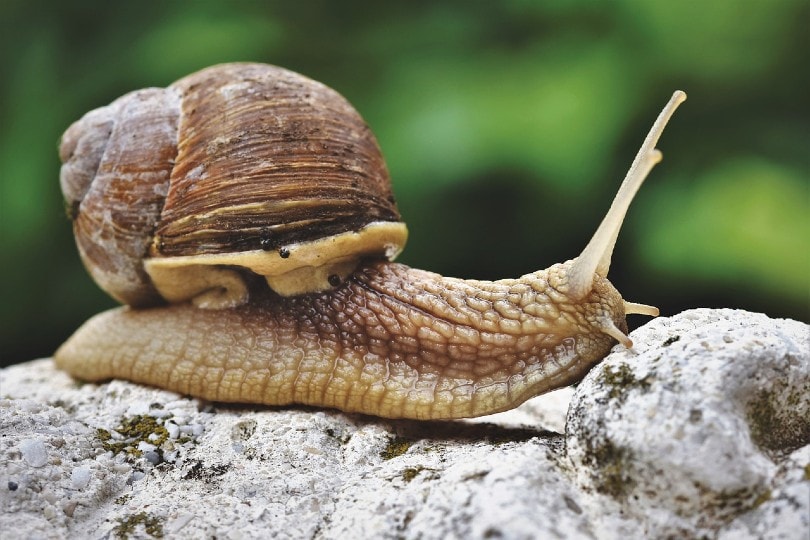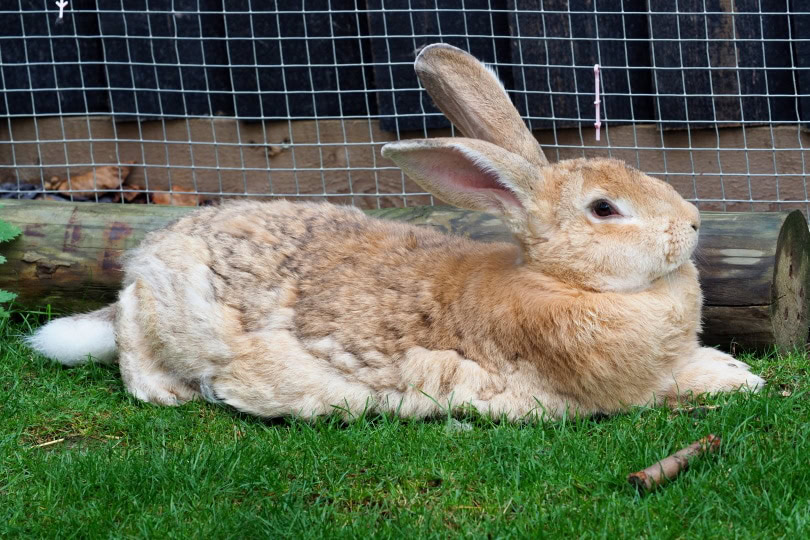VET APPROVED

The information is current and up-to-date in accordance with the latest veterinarian research.
Learn more »Click to Skip Ahead
Washing your cat’s bed regularly will keep them healthy. By washing it, you remove bacteria, parasites, loose hair, dust mites, dander, and hair. Many cat beds today are made to be machine washable, which is convenient. In this article, we included steps for properly washing machine-washable beds and those that are not. The label on the bed should tell you which type you have.
A clean bed will help your cat’s hygiene and be more comfortable for them. Read on for how to wash a cat bed in this step-by-step guide.
 Before You Begin
Before You Begin
No matter which type of cat bed you have, the first thing to do before washing it is remove as much hair as possible from it. The hair can clog the drain of your washer and your dryer vent, so removing the hair first will keep your machines clean and working properly. However, over time, the hair will still build up, so it’s essential to clean them both regularly.
Use a vacuum or lint roller to remove the hair from the bed. You can also shake the bed outside and try to remove the hair with your hand.
Use the Dryer First
Whether your cat’s bed is machine washable or not, it can be thrown in the dryer before washing it. Once you have removed all the hair that you can from the bed, toss it in the dryer on low or just on the air cycle, if possible. This will help remove any remaining hair that may be stuck in the bed.
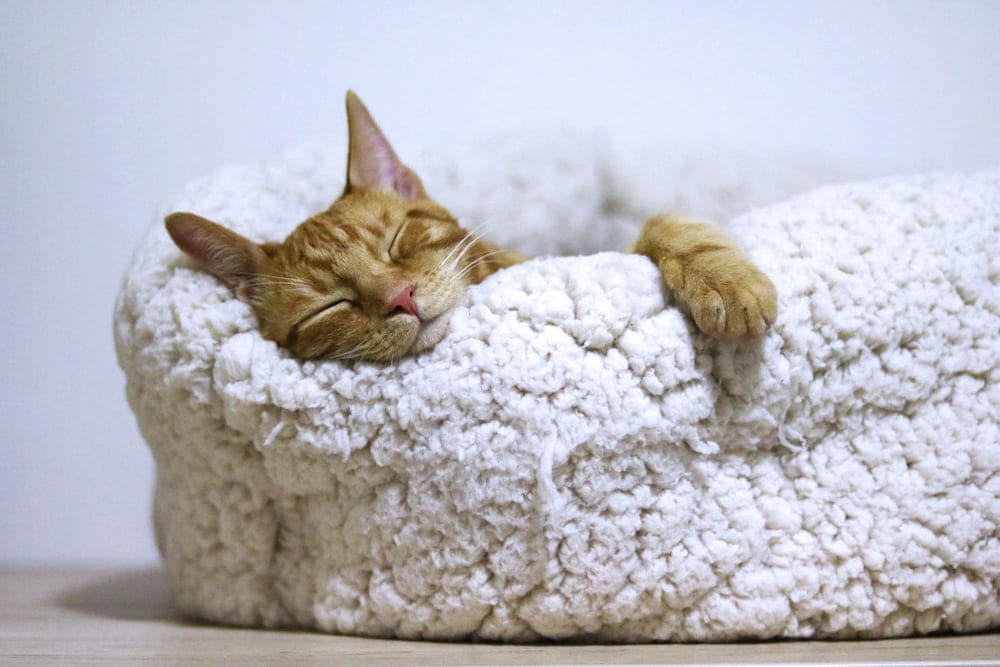
The 3 Steps for Washing a Machine-Washable Cat Bed
1. Remove the Cover

Some cat beds include a removable cover that can be removed and washed separately. They are usually attached using buttons or zippers. If your cat’s bed has a cover, remove it first and check it for heavily soiled areas and stains. Remove any solid debris from the cover before washing it.
2. Spot Treat It
For heavily soiled beds, you may want to spot-treat the areas with stain remover. Spray the soiled spots and let the bed sit for about 10 minutes before washing. Make sure that the spot treatment you use is safe for pets.
Our favorite enzyme cleaner is the Hepper Advanced Bio-Enzyme Pet Stain & Odor Eliminator Spray because it permanently removes even the very worst pet stains and smells you can imagine (and makes clean-up a breeze). They even offer a 100% satisfaction guarantee! Click here to order a bottle and freshen up your home today.
At PangoVet, we’ve admired Hepper for many years, and decided to take a controlling ownership interest so that we could benefit from the outstanding products of this cool cat company!
3. Wash and Dry the Bed
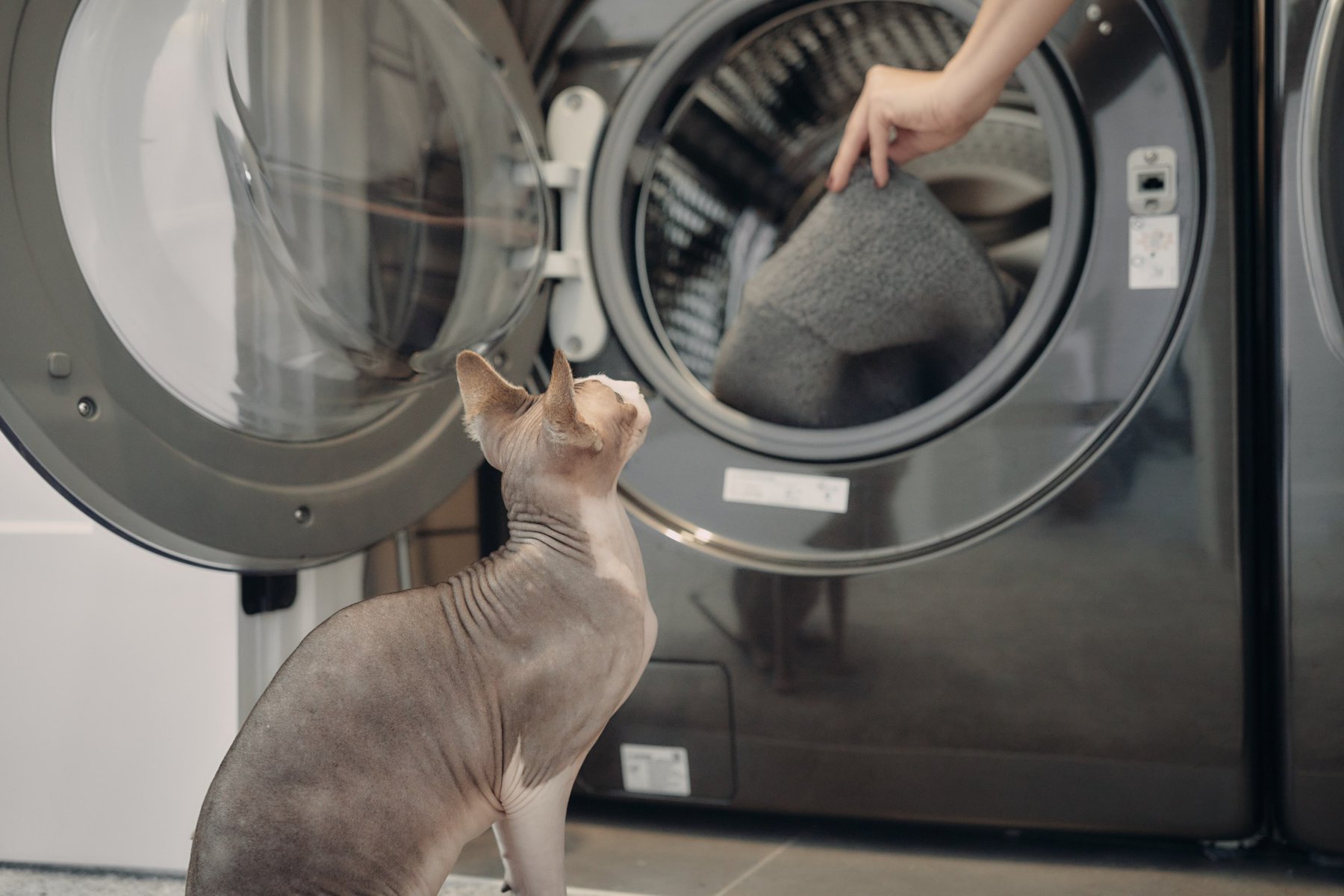
Wash your cat’s bed or bed cover on a hot cycle, material permitting, using a mild, unscented detergent or one made specifically for pets. Follow the washing and drying instructions on the label. Some beds and covers can be dried in the dryer. If so, dry the bed or cover it with an unscented dryer sheet to remove more hair stuck to the material. Be sure to clean out your lint trap when you’re done.
If you’d like to air-dry your cat’s bed, hang it in the sun to give it a fresh scent and feel.
The 3 Steps for Washing a Cat Bed by Hand
1. Fill a Large Basin With Water and Detergent
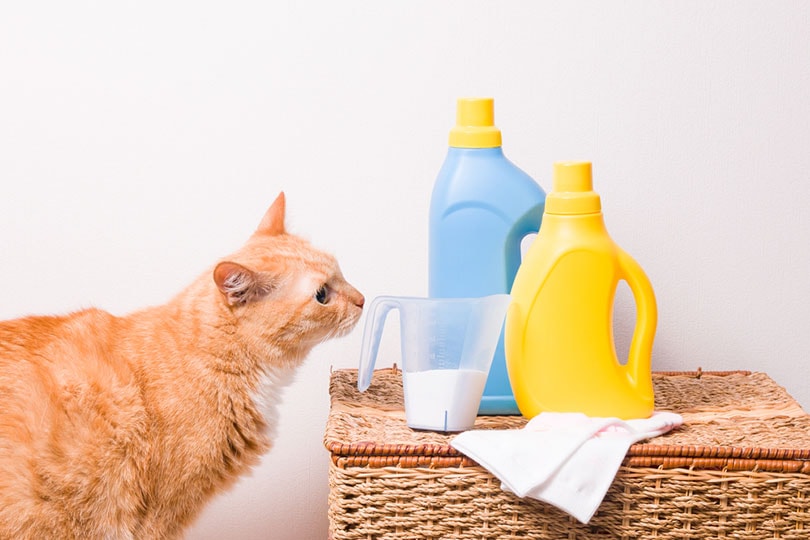
If your cat’s bed is not machine washable, you can wash it by hand in a sink, bathtub, or bucket. If you use a bathtub or sink, be sure to have a drain catcher in place to trap any loose hair so it doesn’t end up in your pipes.
Fill the basin with water and detergent until you have a soapy mixture that will cover the bed or bed cover.
2. Spot Treat It
While the basin is filling, you can spot-treat any heavily soiled areas. Let the bed sit for 10 minutes before adding it to the water.
3. Hand Wash the Bed
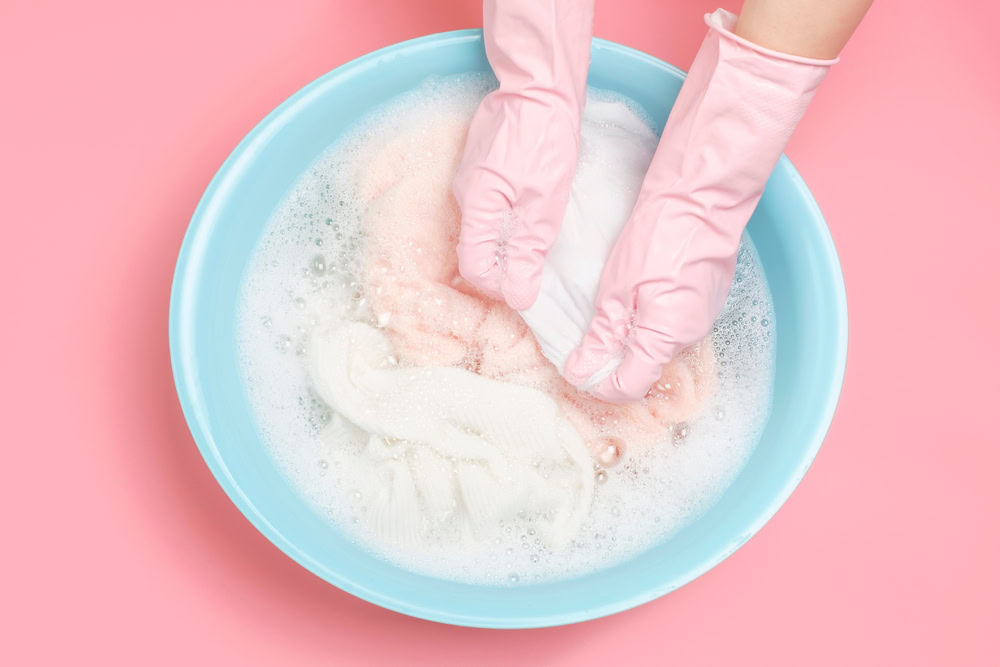
When the basin is filled, soak the bed in the water and allow it to sit for a few minutes. You can wash the bed using a soft sponge, cloth, or your hands. Focus on filthy spots and add more detergent if necessary. When you’re finished, wring the water from the bed or cover and rinse it with clean water. Wring it out again and choose a drying method. If the bed is dryer-safe, you can use your dryer or hang the bed on a clothesline inside or outside to air-dry.
 Cat Bed Washing Tips
Cat Bed Washing Tips
Detergent
You probably want your cat’s bed to smell good, but what smells good to people may not smell good to cats. Cats have a more sensitive and powerful sense of smell than humans. They are thought to smell 14 times better than humans! Some scents can be overwhelming to them, so please avoid detergents with ammonia or scents like citrus, mint, or lavender, and don’t use bleach.
The best detergent to use is all-natural, without any added fragrances. This will remove the foul odors from your cat’s bed while not being too harsh on their noses. A detergent made for pets is best. If that’s not possible, choose one made for sensitive skin and free of dyes and fragrances.
Wash the Bed by Itself
Your cat’s bed should always be washed by itself. If it’s washed with clothing or linens, not only will the bed not get as clean as possible, but the other items can end up full of cat hair.
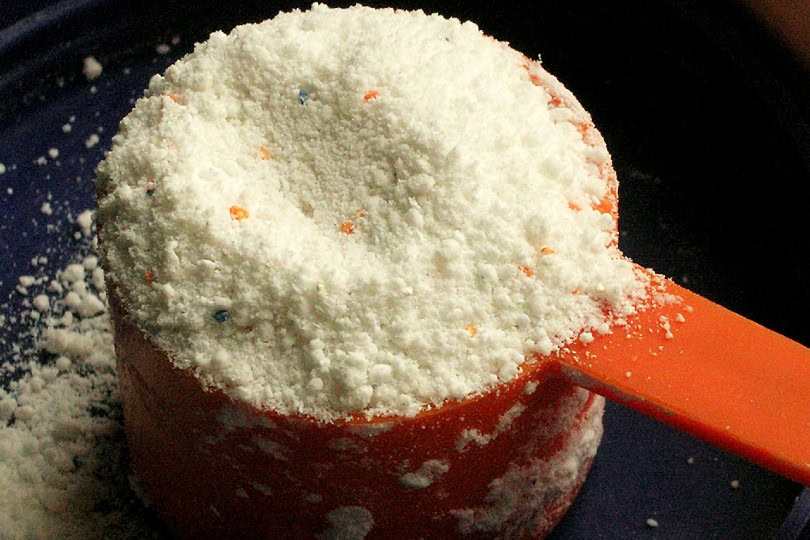
 How Often Should You Wash a Cat Bed?
How Often Should You Wash a Cat Bed?
Your cat bed should be washed whenever it’s necessary, and the schedule can vary from cat to cat. If your cat sheds heavily or regularly soils the bed, it should be washed every 1 to 2 weeks. It’s also a good idea to clean the bed often if anyone in your house has allergies. The bed will hold onto dander that can be spread throughout the air.
If your cat’s bed stays clean and just gets cat hair on it over time, washing it once a month is best to keep it clean and extend its use.
Cleaning the Machines
After drying your cat’s bed, always clean the dryer’s lint trap. It will catch the loose hair and lint from the bed and should be removed immediately. The washing machine can also get filled with hair, so you’ll want to take the time to clean it when you’re done. Sometimes, you’ll see clumps of hair stuck inside the drum. You can pull or wipe these away.
You can also add half a cup of white vinegar to the machine and run an empty wash cycle. This will clean the washer. Afterward, you’ll be able to remove any remaining hair. You’ll also want to clean your washer’s lint trap.
The Bed Didn’t Come Clean
Is your cat’s bed still dirty or smelly after washing? You may want to repeat the process. Sometimes, the bed needs another cleaning cycle, especially if it’s filthy. You can use a spot treatment again and leave it on longer before washing it to see if that solves the issue.
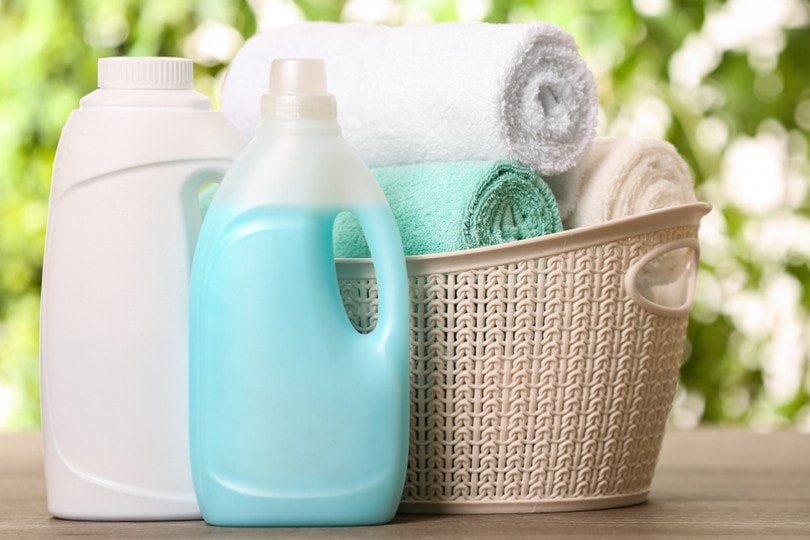
 Final Thoughts
Final Thoughts
Washing your cat’s bed can seem like a daunting task, especially if it’s extremely dirty or covered in cat hair. Good cat bed maintenance can keep your cat cleaner and healthier by removing bacteria, old hair, and dirt from the bed. Follow these steps to safely clean the bed and give your cat a clean place to sleep.
Featured Image Credit: Africa Studio, Shutterstock







